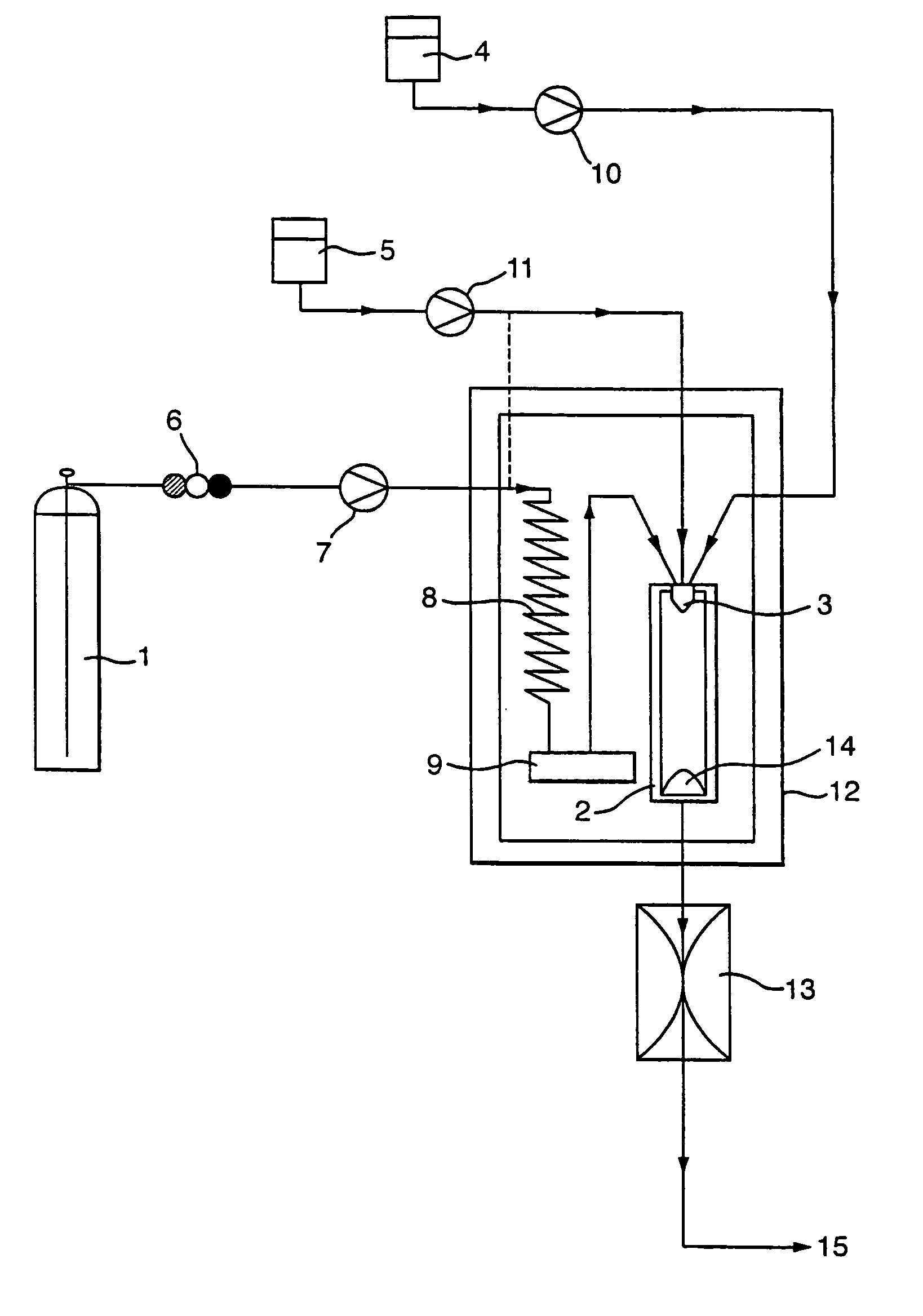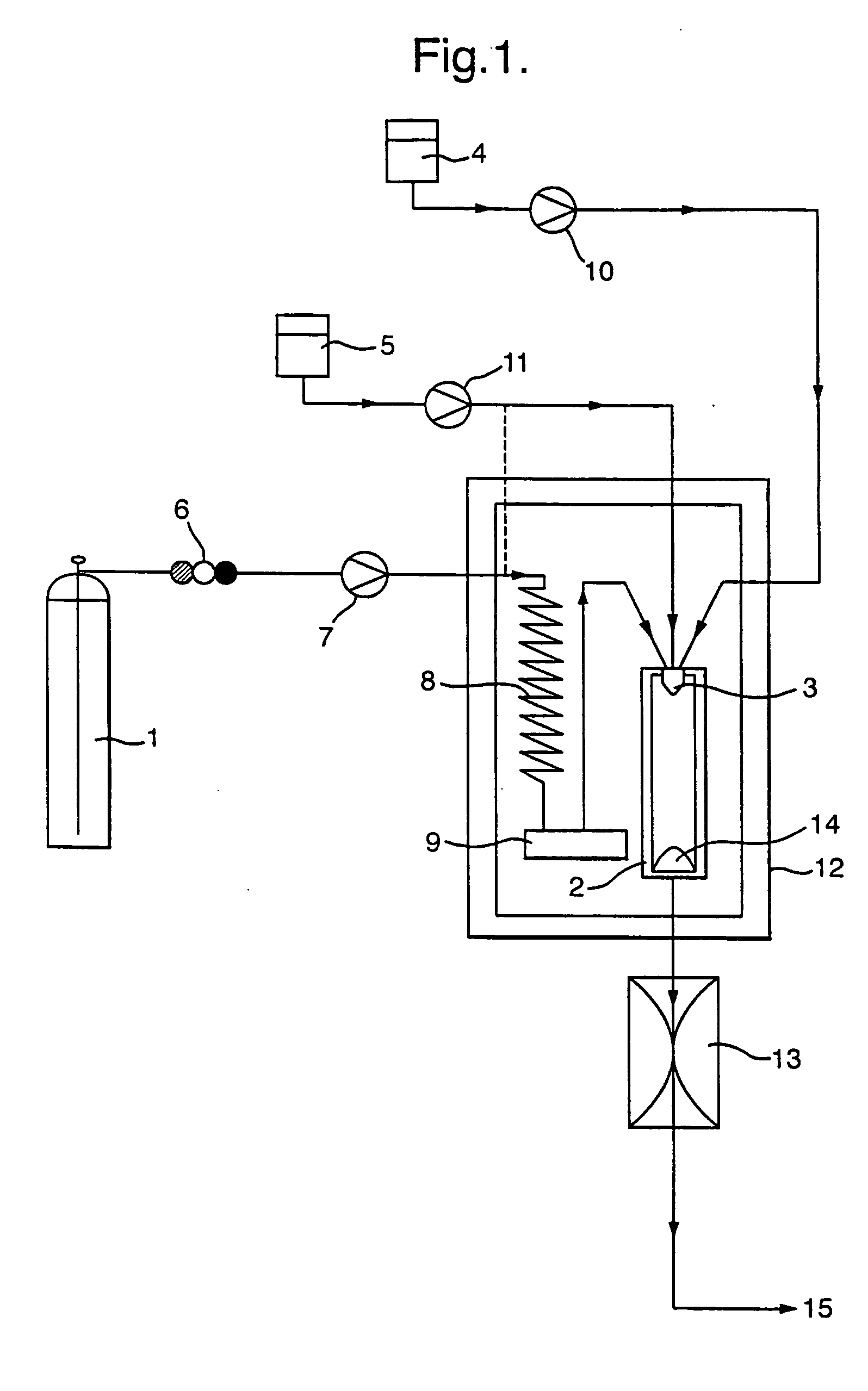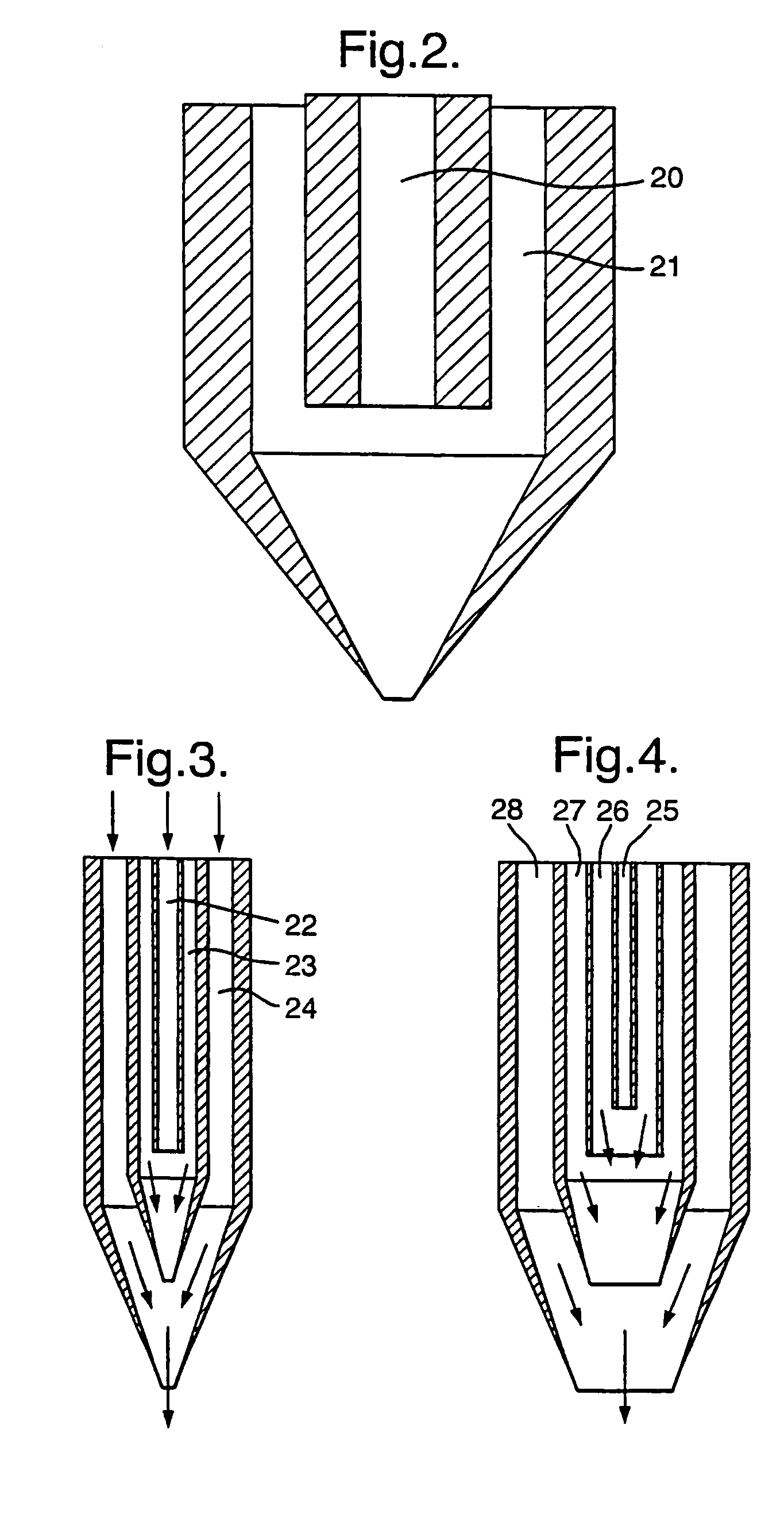Method of particle formation
a particle and particle technology, applied in the field of particle formation, can solve the problem of not being able to recognise the possibility of paired immiscible vehicles, and achieve the effect of different product characteristics and minimizing risk
- Summary
- Abstract
- Description
- Claims
- Application Information
AI Technical Summary
Benefits of technology
Problems solved by technology
Method used
Image
Examples
experimental examples
Example 1
[0100] Using apparatus of the type illustrated in FIG. 1, and a three-passage nozzle of the type shown in FIG. 3, the method of the invention was used to co-precipitate two target substances, salmeterol xinafoate and paracetamol, to form an intimate mixture of the two pharmaceuticals.
[0101] The paracetamol was introduced in the form of a 1.5% w / v solution in a first vehicle (water), via the inner nozzle passage, with a flow rate of 0.04 ml / min. The salmeterol was introduced as a 0.5% w / v solution in a second vehicle, 1-butanol, through the intermediate nozzle passage, at a flow rate of 1 ml / min. The molar ratio of the two vehicles, water:l-butanol, was 0.17:0.83. A supercritical carbon dioxide anti-solvent was introduced, with a flow rate of 18 ml / min (measured at the pump head), through the outer nozzle passage.
[0102] Water and 1-butanol are immiscible, and of the two only 1-butanol is soluble in supercritical carbon dioxide under the operating conditions used.
[0103] T...
example 2
[0105] Example 1 was repeated but with a 0.2% w / v salmeterol xinafoate solution rather than 0.5% w / v.
[0106] Again, the product was a fine, free flowing white powder, in which HPLC analysis confirmed the presence of paracetamol.
[0107] The X-ray powder diffraction profile for the product (FIG. 5) differed slightly from those obtained for pure salmeterol (FIG. 6) and pure paracetamol (FIG. 7), indicating that an intimate mixture had been formed between the two co-precipitated drugs.
[0108] HPLC analysis of the product (FIG. 8) confirmed the presence of paracetamol in the powder mixture—a clear peak was produced at a similar retention time to that found for the paracetamol standard (FIG. 9).
[0109] An SEM photograph of the product, taken at 150× magnification (FIG. 11), shows a considerable difference in crystal habit between the products of Examples 1 and 2. This change may be due to the lower salmeterol solution concentration and the resultant higher paracetamol concentration in the...
example 3
[0110] Again using apparatus of the type shown in FIG. 1, and a three-passage coaxial nozzle, paracetamol was co-precipitated with L-poly lactic acid (L-PLA) using dichloromethane (DCM) and ethylene glycol (EG) as the two vehicles. DCM and EG are immiscible at room temperature and are not expected to be miscible or to have a critical solution temperature below 75° C. (N. Godfrey, Chemtech, June 1972, pp 359-363), due to the difference in their miscibility numbers. Both vehicles are soluble in supercritical carbon dioxide over a wide range of pressures and temperatures.
[0111] A 1.5% w / v solution of L-PLA (Resomer 206) in DCM was introduced into the apparatus at a rate of 0.4 ml / min via the inner nozzle passage. Through the intermediate passage, a 6% w / v solution of paracetamol in EG was introduced at 0.1 ml / mn. The molar ratio of EG:DCM was 0.274:0.736. Both solution streams were mixed and dispersed with a supercritical carbon dioxide anti-solvent flowing through the outer nozzle pa...
PUM
| Property | Measurement | Unit |
|---|---|---|
| Tc | aaaaa | aaaaa |
| pressure | aaaaa | aaaaa |
| diameter | aaaaa | aaaaa |
Abstract
Description
Claims
Application Information
 Login to View More
Login to View More - R&D
- Intellectual Property
- Life Sciences
- Materials
- Tech Scout
- Unparalleled Data Quality
- Higher Quality Content
- 60% Fewer Hallucinations
Browse by: Latest US Patents, China's latest patents, Technical Efficacy Thesaurus, Application Domain, Technology Topic, Popular Technical Reports.
© 2025 PatSnap. All rights reserved.Legal|Privacy policy|Modern Slavery Act Transparency Statement|Sitemap|About US| Contact US: help@patsnap.com



